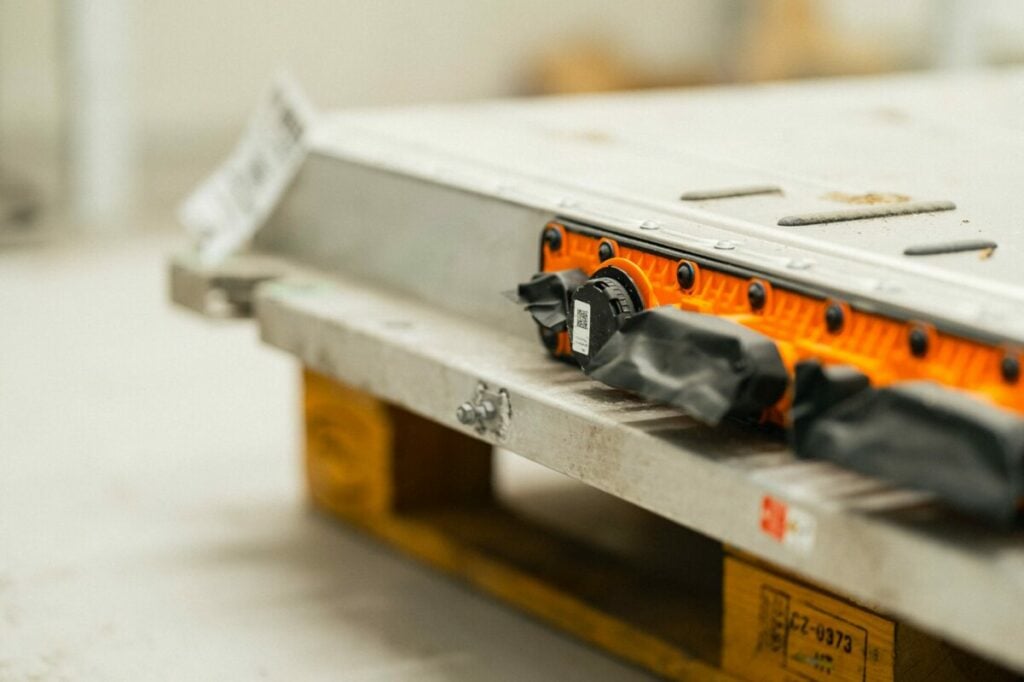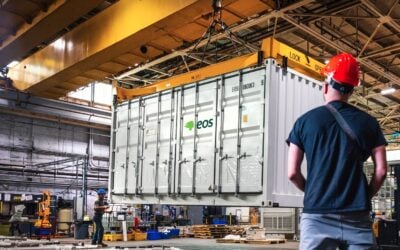
We caught up with Cling Systems, a B2B trading platform for end-of-life lithium-ion batteries which has seen 400MWh of volumes in aggregate for second life energy storage to-date.
The company, founded in 2020 and headquartered in Sweden, was set up with the thesis that the reverse logistics of batteries is highly complex and needs specialised players to solve its challenges. For now, it mainly buys and sells batteries itself but in the future the company wants to work closer with OEMs on a fee-sharing model.
Enjoy 12 months of exclusive analysis
- Regular insight and analysis of the industry’s biggest developments
- In-depth interviews with the industry’s leading figures
- Annual digital subscription to the PV Tech Power journal
- Discounts on Solar Media’s portfolio of events, in-person and virtual
Whether for recycling or reuse, the used EV battery space is highly fragmented and transparency is a major issue. The firm’s platform aims to connect buyers and sellers and increase the availability of data on the batteries, both in terms of what is in them but what they have been used for.
The latter was pointed out as a major challenge to reusing batteries in second life energy storage by Stena Recycling in a recent interview with Energy-Storage.news.
In this Q&A, founder and CEO William Bergh and CMO Eden Yates discuss the platform and the batteries going through it. We also get the company’s reaction to the new EU Battery Regulation, which was voted through last week and creates new requirements around minimum recycled content and data transparency.
How fast is the market of available second life batteries is growing in Europe from your data?
On our platform, the number of batteries added per week is growing on average 5% month-over-month. The most important growth we have seen, however, is from discontinued projects and companies adding hundreds of MWh in large batches. Furthermore, pioneering stationary storage manufacturers are starting to see a return of their first deployed battery systems.
So, you can see a trend developing there: more batteries coming to the end of their first life and available for second life. In aggregate, we have seen over 400MWh available for second life (note, this is not reflecting the volumes we have traded).
How concentrated the supply is in terms of vehicle OEMs?
As you can expect, Teslas do have a high demand and are fairly well developed in terms of price discovery and appetite from the market. Modules that come from off spec production or off spec integration, which likely have not previously been in a vehicle, are also emerging as a strong supply source.
From the Cling perspective, there’s not much we can say (at the moment) on those trades as they are pilot ones and commercially sensitive, but it’s something we believe will be more important as a supply source in the coming decade. And more transparent, with the need for greater awareness on end life traceability.
What percentage of used EV batteries end up not being suitable for a second life application and then have to be recycled?
The vast majority of trades we are dealing with are for second life and we are catering to demand with those aims very clearly communicated to us. The consolidated volumes of batteries unsuitable for second life, and suitable for recycling, have yet to really spike. It’s also fair to say that gives some time for the various recycling plants and processes to get up and running and refined. Eventually being able to judge that optimal flow between second life and recycling is where we want to be.
What are the use cases that second life EV batteries are being repurposed for and the role state-of-health (SOH) plays here?
The use cases we see are mostly for energy storage system (ESS) applications or being reused – for example, in a classic car that is being retrofitted from an ICE to an EV. SOH is important for both, and above c.70% is something market participants tend to be looking for.
What is the rough price/kWh that second life EV batteries generally trade for?
Clearly there is a big spread of different types of batteries, chemistries, form factors, parameters that goes into that sample of second life batteries, so it’s worth consider that context. It spans from single-digit €/kWh to well above €200. Modules tend to be priced 10-30% higher than packs as they have lower logistic costs and repurposing costs.
How much time have EV batteries spent in a vehicle before arriving on your platform?
The majority of batteries on the platform were produced between 2017-2021 and tend to have a mileage lower than 100,000 km. It’s early days for this data so the obvious caveats apply about correlation and causation but we’re excited to see how that graph will look in a couple of years time. Interestingly, there was a big uplift from 2016 to 2017.
What are the main near term implications of the new EU Battery Regulation?
It’s helpful. Not least it provides some momentum for Europe compared to the progress in other regions. Energy security is pivotal, and batteries can be a key way of achieving that if used to their full potential.
For us, the Regulation finally removes some of the ambiguity on recycling, repurposing, EPR (Extended Producer Responsibility) transfers, and circularity as a whole. For the industry, that could mean more certainty for investors deploying capital.
It should also mean more companies can participate in what is a nascent market. That participation inevitably requires more transparency on IP (raw material content, SOH etc) that was hard to access previously; we think more participation in circular flows is a good thing in the long term.
The passport still has some months to go before being implemented so it’s hard to make a call on its effectiveness. End of life supply chain events of change of ownership do need the appropriate trading infrastructure for the passport’s vision to be realised, and that’s what we want to be able to provide at scale.
One way of thinking about it is that battery passports need passport controls. Otherwise it will be nothing but an expensive table of contents.






